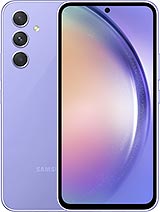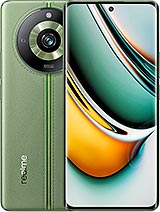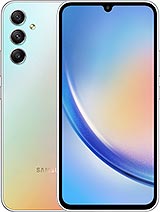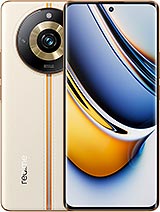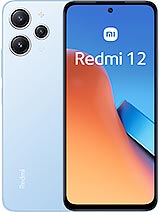Infinix Zero 30 review

XOS 13 on top of Android 13
The Zero 30 runs the company's own XOS skin on top of the latest Android 13 OS. It claims a clean experience, but one augmented with plenty of additional features.

We don't have a commitment from Infinix on the Zero 30 support, but generally the company does one major Android update and two years of security patches. That's below the industry's standard these days, where midrangers are often treated to at least two major updates, while flagships tend to have three or more guaranteed OS upgrades.
You also geta whole lot of pre-installed apps, which we don't really appreciate. An argument can be made regarding the AOSP-like nature of the default iconography, but generally the UI is deeply customized.

The good news is that XOS 13 works smoothly, with no hiccups or stutters, despite the influx of apps. So Infinix has done its job pretty well on that front.
Customization runs deep. Starting from the lock screen, where you get an optional Magazine service. Beyond that, a powerful Theming engine with an online Theme repository exists. There are plenty of Always-on display customizations as well.
The home screen includes a custom feed as the leftmost desktop pane and big folders to organize and categorize your shortcuts by default. There is an alphabetized app drawer with a search bar and recent apps UI as well. There is no way to disable the app drawer if you'd like to go to a flat interface, though.
You also get extremely extensive home screen customization. You can tweak things like grid size, gestures, and notification badges. You can even switch to vertical rather than horizontal scrolling for the homescreen and change the text color.
The notification shade and control center are separated into two panels, just like MIUI. Notifications are called up with a swipe down from the top left of the phone, while a top-right swipe reveals quick toggles and other controls.




Notification shade and quick toggles
Lightning Multi-Window is a floating app window implementation. Far from the best we've seen in terms of window management, but you can open a bunch of windows.
The Smart Panel feature is Infinix's name for the side bar functionality. It's among the more customizable implementations of this feature that we have seen.
Social Turbo houses a whole slew of powerful features meant to work on top of WhatsApp and enhance its factory experience.
You get optional extra gestures, app cloning, known as XClone, as well as some gimmicks like Peek Proof, which "hides" parts of the screen to enhance your privacy in busier environments.
MOL - the offline, system-wide translation engine that was once part of XOS is now absent. It has transitioned into something called Folax Translate, which is a part of the company's AI assistant, but since the functionality is all there, we won't complain. As per Infinix press materials, Folax now integrates ChatGPT, which is cool.
Speaking of which, the company also promises to deliver Smart Search for images and an AI Wallpaper Generator app in a future OTA update. So, you can look out for those as well.
There is a system-wide Game Mode toggle and a Game Mode setting menu to tweak resource management.
Dar-Link promises AI-driven optimization of games, including frame rate stability, decreasing touch latency and managing hardware performance and temperature. Unfortunately, the handy Bypass Charging option is not present on the Zero 30.
The XArena app is a game launcher with various tweaks, like notification suppression. Once you add an app to XArena and start it from there, you also get an in-game toolbar with convenient shortcuts, including floating app support.
Infinix offers a key mapping option for its volume up and down keys. You can have these translate to on-screen inputs, which is a way to make the Zero 30 more of a gaming phone even though it doesn't have shoulder trigger keys.
If we had to sum up the experience with XOS, we would say it is pleasantly fluent from a performance standpoint but in need of polish. Infinix needs to do some debloating and organization.
Performance tests
The Infinix Zero 30 is built around the MediaTek Dimensity 8020 chipset. It is a modern chipset from 2023 built on TSMCs 6nm N6 node. Once you scratch the surface, however, it quickly becomes obvious that the Dimensity 8020 is simply a rebadged Dimensity 1100. That's not an intrinsically bad thing either, but it does mean that the chip is essentially from 2021.

On the CPU side of things, the Dimensity 8020 uses four ARM Cortex-A78 cores, clocked at a maximum of 2.6 GHz and another four ARM Cortex-A55 ones, working at up to 2.0 GHz. A Mali-G77 MC9 GPU accompanies this. There are 256 GB of on-board UFS 3.1 storage, but no microSD for expansion. The Zero 30 comes with either 8 GB or 12 GB of LPDDR4X RAM and up to 9GB of additional virtual memory. Our review unit is the higher-tier 12GB one.
We haven't seen many Dimensity 8020 chipsets come through the office yet. And in fact, there haven't been many Dimensity 1100 devices around these parts either. This all makes the results quite interesting to see.
Let's kick things off with some CPU tests and GeekBench. In CPU terms, the Dimensity 8020 is about on par with the Snapdragon 778G and 778G+. The original Google Tensor chip is not far off either, at least not in multi-core terms, nor is the Dimensity 8050. Interestingly enough, the Motorola Edge 40, rocking the Dimensity 8020 as well, managed to squeeze a suspicious amount of extra CPU performance out of the chip.
AnTuTu is a compound benchmark that also includes tests for memory and some GPU runs. The Infinix Zero 30 holds its own well in these tests. Again, the Motorola Edge 40 has it beat despite rocking the exact same chipset. Regardless, the Infinix Zero 30 and its Dimensity 8020 edges chips like the Snapdragon 778G and 778G+ and also leave the Exynos 1380 and, the Galaxy A54 and the Redmi Note 12 Pro+ with their Dimensity 1080 in the dust.
While the Mali-G77 MC9 GPU is not particularly powerful in absolute terms, you will be hard-pressed to find much better graphical performance in this price range, except for the Google Pixel 6a.
3Dmark paints a very similar overall picture. And Dimensity 8020 again has chipsets like the Snapdragon 778G+ and the Exynos 1380 behind it in the graphical department.
The Infinix Zero 30 does not handle prolonged stress particularly well. It thermal-throttles aggressively and loses quite a bit of its performance very quickly when pushed to its limit.
On a more positive note, at least the loss in performance, while aggressive, is mostly gradual and should not result in stuttering in-game. Also, the phone's surface remains pretty lukewarm even after a full hour of torture testing.
Overall, we can't say that the Infinix Zero 30 is starved for power. Sure, it won't be topping any charts, but it still has plenty of RAW performance to go around and chew through pretty much every daily task you throw at it. XOS 13 runs smoothly with no hiccups. Apps open fast and run fine, too. Gaming is perfectly feasible if you stick to casual to mid-range titles. In any case, you can't easily find significantly more powerful competitor devices in the same price range.
Reader comments
- Anonymous
- 13 Oct 2024
- B{P
I bought Zero 30 5g, with 256 gb storage, 12 gb ram expandable to 21 gb from storage (UFS3.1) its great in gaming, great in stereo speakers, great in battery life, fast charging, no ads (unless you download apps that comes with ads) or stability issu...
- Suffering frm Infx
- 11 Aug 2024
- uWN
Never ever buy this battery problem automatically on and off without reason even after company repairing same problem all money wasted big lose
- Imran
- 22 Jul 2024
- XRX
Useless phone. No updates old default app. New phone but still on Android 13. Never buy please







































